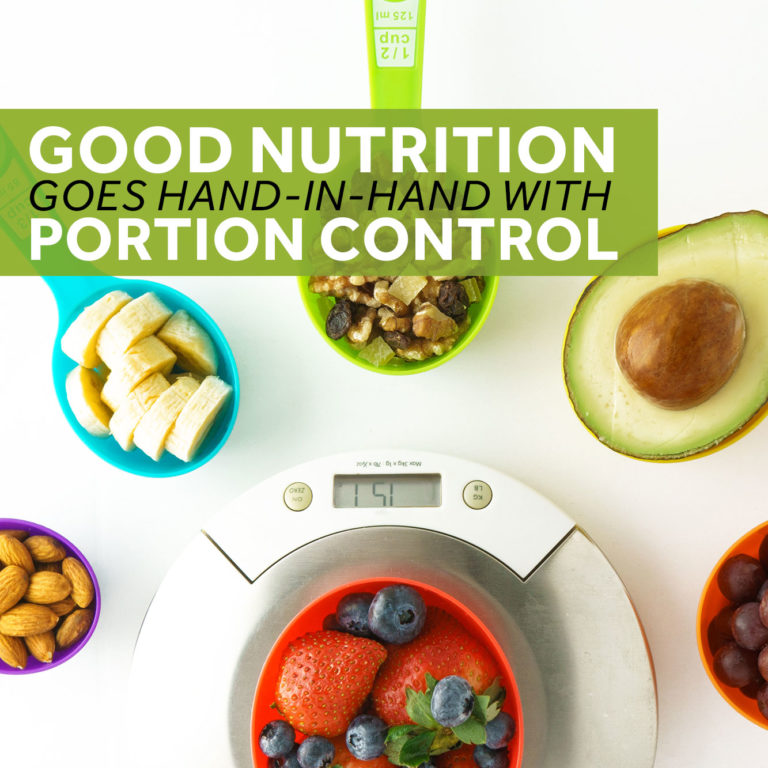Have you been making changes to your nutrition intake in hopes of seeing a change on the scale, but you are not seeing what you expected? It could be that you’re under- or over-estimating how much you are eating.
While most people don’t weigh and measure their food, the food manufacturers certainly do. The nutrition label specifies a “serving size,” representing the amount needed to acquire the nutrients listed. However, our actual consumption, termed as “portion size,” often deviates from the serving size. Recognizing that one’s portion may be smaller or larger than the recommended serving size is crucial when contemplating adjustments to dietary habits.
A handy way to estimate a portion of food is just an arm’s length away, though. You can use your own hand (or some common items) to visually estimate about how large your portion is, so that you can figure out about how much of a serving you’ve dished up. Here are some good rules of thumb:
- Fist or a baseball
-
- Equivalent to about 1 cup
- Use to measure portions of vegetables and fruits
- Cupped hand or a tennis ball
-
- Equivalent to about ½ cup
- Use to measure a portion of grains (rice, oatmeal, etc), including pasta
- Palm of the hand or a deck of cards
-
- Equivalent to about 3 ounces
- Use to measure a portion of fish, chicken, beef, other meats, and meat substitutes
- Thumb or a poker chip
-
- Equivalent to about 1 tablespoon
- Use to measure a portion of peanut or other nut butter, mayonnaise, olive oil, or salad dressing
Knowing more about how much you’re eating will help you reach your nutrition goals. Remember what research tells us at the NRI: We’re all unique. Your nutrition needs vary. Listen to your body, tune into your hunger and fullness feelings, and nourish yourself accordingly.
You can get a lot of helpful information from the Academy of Nutrition and Dietetics and the USDA’s Dietary Guidelines 2020-2025 or consult your physician or a dietitian.
This article has been crafted with insights from Kendra Nelson, MPH, RD, (Registered Dietitian) to ensure accuracy and reliability in the nutritional information provided. Their expertise has been instrumental in enhancing the quality of content to better serve our readers.
Nelson is a Graduate Research Assistant in the Voruganti Lab. They joined the Voruganti Lab at the NRI in August 2019 where they focus on the role of nutrition and genetics in obesity and cognitive decline. In May 2016 they received their undergraduate degree in Nutrition from Southern Utah University. There they conducted research focusing on the accuracy of consumer fitness trackers and their value as an assessment tool in dietetics practice and future nutrition research. Kendra worked as a public health sanitarian prior to attending UNC’s MPH/RD program from which they graduated in December 2019, earning their registered dietitian credentials shortly afterward.
 This article is a response to queries received through our new series, Ask a Scientist. Frequently, our readers ask nutrition research questions, seeking insights from our experts. If you have a question to submit*, click here.
This article is a response to queries received through our new series, Ask a Scientist. Frequently, our readers ask nutrition research questions, seeking insights from our experts. If you have a question to submit*, click here.
*We receive a high volume of inquiries and your question may not be selected. You may submit as many questions as you’d like.

